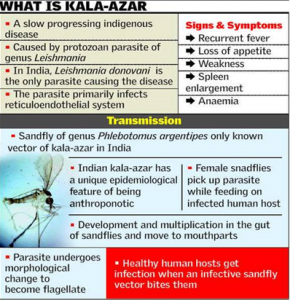THE POLITY AND GOVERNANCE
1. THE EMERGENCE OF LOK ADALAT
THE CONTEXT: According to National Legal Services Authority, that it is committed to deliver prompt and inexpensive justice to the citizens. Recently, it has decided to lay more emphasis on contribution of National Lok Adalat in effectively reducing the number of pending cases through Alternative Dispute Mechanisms.
THE STATUS OF LOK ADALAT:
- To achieve this goal, the Legal Services Authorities shifted to dynamic preparation strategies for organization of the Lok Adalats. As a preparatory measure, NALSA started organization of prior consultative and review meetings with all the State Legal Services Authorities to guide them towards the maximum disposal during such Lok Adalats.
The empirical Data:
- A cumulative effect of all the preparatory and mobilization measures resulted in extraordinary disposal figures during the year 2021. Across the country, a total number of 1,27,87,329 cases were disposed of in four National Lok Adalats, which included a huge number of pending cases i.e., 55,81,117 and a record number of pre-litigation cases i.e., 72,06,212. Through these activities the Legal Services Authorities disposed off a large number of cases giving relief to the common citizens by ending or preventing long lasting legal battles.
- The second in line were the Revenue cases consisting of 11,59,794 pre-litigation and 14,99,558 pending cases. Apart from these, the other disposed of cases were cheque bounce cases under NI Act, Bank Recovery Cases, Motor Accident Claims, Labour Disputes, matrimonial cases, etc.
Technological Advancements:
- In June 2020, the Legal Services Authorities integrated technology with the conventional modes of dispute settlement and introduced virtual Lok Adalats also called as ‘E-Lok Adalats’. Since then, all the Lok Adalats including National Lok Adalats are organized through virtual and hybrid modes.
- Due to these technological advancements, Lok Adalats have reached to the doorsteps of the parties. The parties are now able to join the Lok Adalat proceedings from their homes or workplaces, saving them the hassle of travelling and reserving a full day for an affair, which gets over within minutes.
- The other major factor in the success of Lok Adalats was the formulation of decisive strategies at the National level. Under these strategies, the State Legal Services Authorities were instructed to conduct meetings with various stakeholder across every level with an objective to ensure their full cooperation and coordination. The authorities were guided to follow a litigant friendly approach as well as to persuade such litigants to settle the cases involving settled propositions of law.
Value Addition:
About Lok Adalat
- Lok Adalat is a system of alternative dispute resolution developed in India. It roughly means “People’s Court”, which is established through Legal Services Authorities Act, 1987 which came into force on 9th November 1995.
- Article 39 A of the Constitution provides for free legal aid to the poor and weaker sections of the society, to promote justice on the basis of equal opportunity. Article 14 and Article 22 (1), obligates State to ensure equality before law.
- They are held periodically for exercising such jurisdiction as they determine. The first Lok Adalat was held on March 14, 1982, in Gujarat.
What is an ADR?
- Alternative dispute resolution (ADR) is designed to settle disputes outside of the courtroom with the help of an impartial third party. The latter means the decision is final and enforceable, while the former implies that the arbitrator’s ruling is advisory and only set in stone if both parties agree to it.
- The ADR techniques mainly include arbitration, conciliation, mediation, and negotiation. In India, Lok Adalat stands as another additional form of ADR mechanism, which combines different techniques like conciliation, mediation, and negotiation.
THE ENVIRONMENT AND ECOLOGY
2. THE WORLD’S SIXTH MASS EXTINCTION
THE CONTEXT: Scientists are warning that we are in the early throes of another such annihilation event. Unlike any other, this sixth mass die-off — or Anthropocene extinction — is the only one caused by humans, and climate change, habitat destruction, pollution and industrial agriculture all play a hand.
THE EXPLANATION:
- In mass extinctions, at least three-quarters of all species cease to exist within about 3 million years. Some scientists believe that at our current rate, could be on track to lose that number within a few centuries.
- Over the next few decades alone, at least 1 million species are at risk of being wiped out. That’s according to an estimate in a landmark report published in 2019 — but many scientists say it could well be an undercount.
- Trying to predict the results of a complete collapse in biodiversity is almost a black art — ecosystems are incredibly complex.
- However, that there are several clear predictions should extinctions continue at this rate.
LOSS OF FOOD SECURITY
- Bees play a vital role in ensuring our food security
- About one-third of the world’s food supply relies on pollinators such as bees, and, if they die out, agricultural yields could plummet.
- Some crop pests may thrive as predators drop off, further impacting monoculture harvests.
- And millions of people rely on wild species for nutrition and their livelihoods, particularly on coastal and inland fisheries, which are especially vulnerable to disappearing.
- According to Scientist, this lack of food security, which will also be connected to increased drought and flooding, will hit poorer regions hardest — particularly sub-Saharan Africa and parts of Southeast Asia.
SOIL FERTILITY
- The quality of soil is also expected to deteriorate if critical microorganisms die off. Though underrepresented in the data, some researchers believe they are potentially vanishing at a faster rate than other species. Their disappearance could lead to worsening erosion, which in turn results in more floods, as well as poorer fertility, which again impacts crop growth.
- Healthy soils rely on microorganisms that some scientists say are dying out at rapid rates.

ATER SHORTAGES AND NATURAL DISASTERS
- A lot of the world’s fresh water comes from wetlands that purify and redistribute this life source. The Himalayan water tower for example, which is fed by rivers and wetlands, supplies about two billion people. If systems like these collapse, as a result of impacts including algae blooms and receding vegetation, humanity could lose a lot of water for drinking and agricultural use.
- As forests recede, rainfall patterns are likely to shift as evapotranspiration — the process in which moisture is returned to the atmosphere through evaporation and plant transpiration — is affected, further drying out the landscape, as has been seen in the Amazon.
- The UN Food and Agriculture Organization estimates that about 10 million hectares (24 million acres) of forest were cut down annually from 2015. The Amazon rainforest is under threat from deforestation. And with the loss of trees and vegetation — fundamental regulators of atmospheric carbon dioxide — climate change is expected to worsen, triggering more extreme weather events. Drier conditions and unhealthy forests also increase the risk of wildfire.
- Meanwhile, crop failures and other ecological threats will likely trigger mass migrations as people escape famine and conflict over dwindling resources.
THE SOCIAL AND HEALTH ISSUES
3. THE KALA AZAR DEATH IN JHARKHAND
THE CONTEXT: For the first time in eight years, Jharkhand reported a death due to kala azar in the state, even as the total cases continue to decline. While 752 cases were identified as positive in 2015, the number of provisional cases last year till November 2021 was 242, as per data on the National Centre for Vector Borne Disease Control portal.
THE EXPLANATION:
- In Jharkhand, it is endemic to four districts, especially their rural areas: Sahebganj, Godda, Dumka and Pakur, covering 33 blocks. The disease is considered endemic if there is more than one case per 10,000 population.
- Jharkhand, in fact, has managed to ensure an uninterrupted decline in cases – 25% on an average annually – despite two waves of Covid-19. “Cases have declined, but the transmission cannot be reduced abruptly.
- Data regarding kala azar in the state is available since 2014. However, even in 2015, when Jharkhand reported a high of 1,358 cases, no deaths were seen.
About the Kala Azar Disease:
- Kala azar (meaning black death) or Visceral leishmaniasis is the second largest parasitic killer in the world—only malaria is more deadly. Along with Chagas disease and sleeping sickness, kala azar is one of the most dangerous neglected tropical diseases (NTDs).
Initiatives were taken by Government of India

- WHO has set the target for GOI to eliminate it by 2017. A centrally sponsored kala-azar control programme had been launched for endemic states in the year 1990-91.
- National roadmap for Kala-azar has been circulated in all states.
- Treatment of the patient with single day single dose AmBisome injection has improved treatment compliance.
- Regular supply of diagnostic kit.
- 300 being given to ASHA worker or health volunteer to bring cases suspected with Kala-azar and ensures their full treatment.
THE SCIENCE & TECHNOLOGY
4. THE GRIME-EATING BACTERIA TO RESTORE CLASSICAL ART (BIO CLEANING & BIO RESTORATION)
THE CONTEXT: Scientists from Italy are using grime-eating bacteria to restore classical art. Art restorers have usually employed chemical agents and, more recently laser techniques, to remove dirt, oil, glue, or pollutants from monuments, stone works, and paintings.
THE EXPLANATION:
Since the 1980s, when researchers first used the bacteria Desulfovibrio vulgaris to clean a marble monument at the Cave Hill Cemetery in Louisville, US, the role of micro-organisms has been recognised in protecting the artistic heritage of humanity.
Calling in the bugs

- The New York Times, which first reported the initially secret restoration in Florence, said the team washed the hair of one of the marble statues with Pseudomonas stutzeri CONC11 bacterium isolated from the waste of a tannery near Naples, and cleaned the residue of casting molds, glue, and oil using Rhodococcus sp. ZCONT, another strain that came from soil contaminated with diesel.
Cleaning of Taj Mahal:
- Researchers from Thapar Institute of Engineering and Technology, Patiala, and Curtin University in Perth, Australia, and the Archaeological Survey of India is learning the way to exploring the option of employing bio-restoration at the Taj.
- According to the researchers, “first they need to study the marble to understand if it is just dust and particulate carbon causing the dark colour or if there is a biofilm formation.”
THE PRELIMS PRACTICE QUESTIONS
QUESTION OF THE DAY 13TH JANUARY 2022
Q1. Which of the following is not compiled by the Labour Bureau in the Ministry of Labour and Employment?
a) CPI for Industrial Workers (IW)
b) CPI for Agricultural Labourer (AL)
c) CPI for Rural Labourer (RL)
d) CPI (Rural/Urban/Combined)
ANSWER FOR 12TH JANUARY 2022.
Answer: B
Explanation:
- Statement 1 is correct: Henley Passport Index ranks world’s passports according to the
- number of destinations their holders can access without prior visa.
- Statement 2 is correct: Ranking is based on data from International Air Transport Association
- (IATA).
- Statement 3 is incorrect: India is ranked 83rd in its 2022 index, climbing seven places from 90th rank last year.

